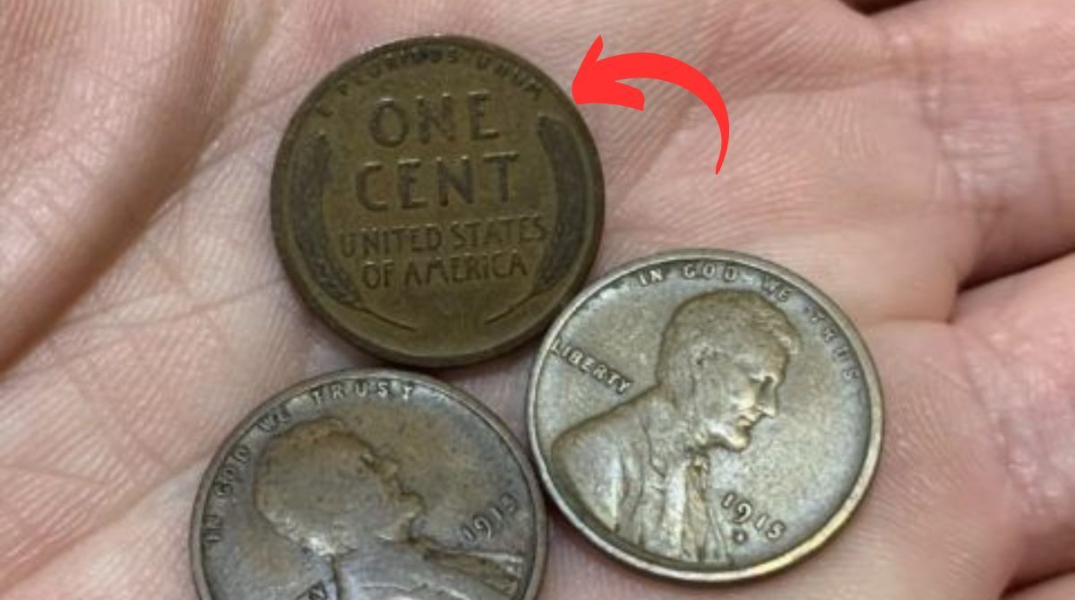The Lincoln Wheat Penny Valued At $3.2 Million – The Lincoln Wheat Penny isn’t just pocket change—it’s a piece of American history. First minted in 1909, it marked the 100th anniversary of President Abraham Lincoln’s birth. But what truly made it revolutionary was its design: it was the first U.S. coin to feature a real historical figure. Victor David Brenner, the artist behind the coin, honored Lincoln’s legacy with a side profile portrait. The reverse displayed two wheat ears—symbols of prosperity and growth—making the penny both patriotic and iconic.
A Rare Mistake That Made History
During World War II, copper became a vital wartime material. In 1943, to conserve copper for ammunition and machinery, the U.S. Mint began making pennies from zinc-coated steel. But at the Denver Mint, a handful of copper blanks from the previous year were accidentally fed into the presses.
The result? A small batch of 1943 Lincoln pennies made from copper instead of steel—an unintentional error that would later create one of the most coveted coins in history. Among these, one pristine specimen stands out: a 1943-D copper penny valued at an astonishing $3.2 million.
Why It’s Worth So Much
Several rare coin sales have shocked collectors before, but this 1943-D copper penny is in a league of its own. Its value stems from:
-
Unbelievable rarity: Only a few are confirmed to exist.
-
Perfect condition: This specific coin shows almost no wear, as if it was never circulated.
-
Wartime error: Mistakes made during historically significant periods drive collector demand.
-
Denver mintmark “D”: This version is even rarer than the Philadelphia or San Francisco variants.
Together, these traits have turned this penny into a high-stakes collector’s dream.
Also Read – The Lincoln Wheat Penny Valued At $2.2 Million, Still In Circulation
Could You Have One?
The idea that a penny in your change jar could be worth millions is what excites both seasoned collectors and curious beginners. While finding this exact coin is highly unlikely, other valuable coins—including 1943 copper pennies without the “D” or other minting anomalies—are out there.
How to Spot a Genuine 1943-D Copper Penny
To determine if you’ve got a potential treasure on your hands, look for:
-
Date: Must read “1943” without signs of tampering.
-
Mintmark: A small “D” below the date indicates the Denver Mint.
-
Color: Genuine 1943 copper pennies will be brown, not grayish like steel pennies.
-
Magnet Test: Steel pennies will stick to a magnet; copper ones will not.
-
Authentication: Only certified experts can confirm a coin’s authenticity and grade.
Caring for Rare Coins
If you believe you’ve found something special:
-
Never clean the coin – even gentle scrubbing can ruin its value.
-
Use gloves or hold by the edges only.
-
Store in a coin holder or capsule to protect it from humidity and damage.
-
Get it graded by a professional service like PCGS or NGC.
A Cultural Impact Worth More Than Cents
Stories like the $3.2 million penny continue to fuel the popularity of numismatics (the study and collecting of coins). It turns everyday pocket change into a potential treasure hunt—and inspires people to look more closely at the coins they take for granted.
Even if you don’t strike it rich, diving into coin collecting offers a fun way to connect with history, economics, and art—all in the palm of your hand.
FAQs: Lincoln Wheat Penny & Rare Coin Collecting
Q: How many 1943 copper pennies exist?
A: It’s estimated that fewer than 20 genuine 1943 copper pennies exist across all U.S. mint locations.
Q: Can I find a valuable penny in circulation today?
A: It’s unlikely, but not impossible. Rare coins have surfaced in change jars, piggy banks, and inherited collections.
Q: How can I tell if my penny is steel or copper?
A: Try the magnet test—steel sticks, copper doesn’t. Also, steel pennies have a gray color, while copper has a brownish tone.
Also Read – The Lincoln Wheat Penny Valued At $1.2 Million, Still In Circulation
Q: Who should I contact for coin authentication?
A: Reputable grading companies include PCGS (Professional Coin Grading Service) and NGC (Numismatic Guaranty Company).
Q: What other coins are worth big money?
A: Look out for 1955 double-die pennies, 1909-S VDB pennies, and error coins from various years.
Final Thoughts
The tale of the $3.2 million Lincoln penny is a reminder that history, value, and human error can align to create something extraordinary. So next time you drop a penny into a jar or glance at your spare change—look twice. You never know what treasure you might be holding.

